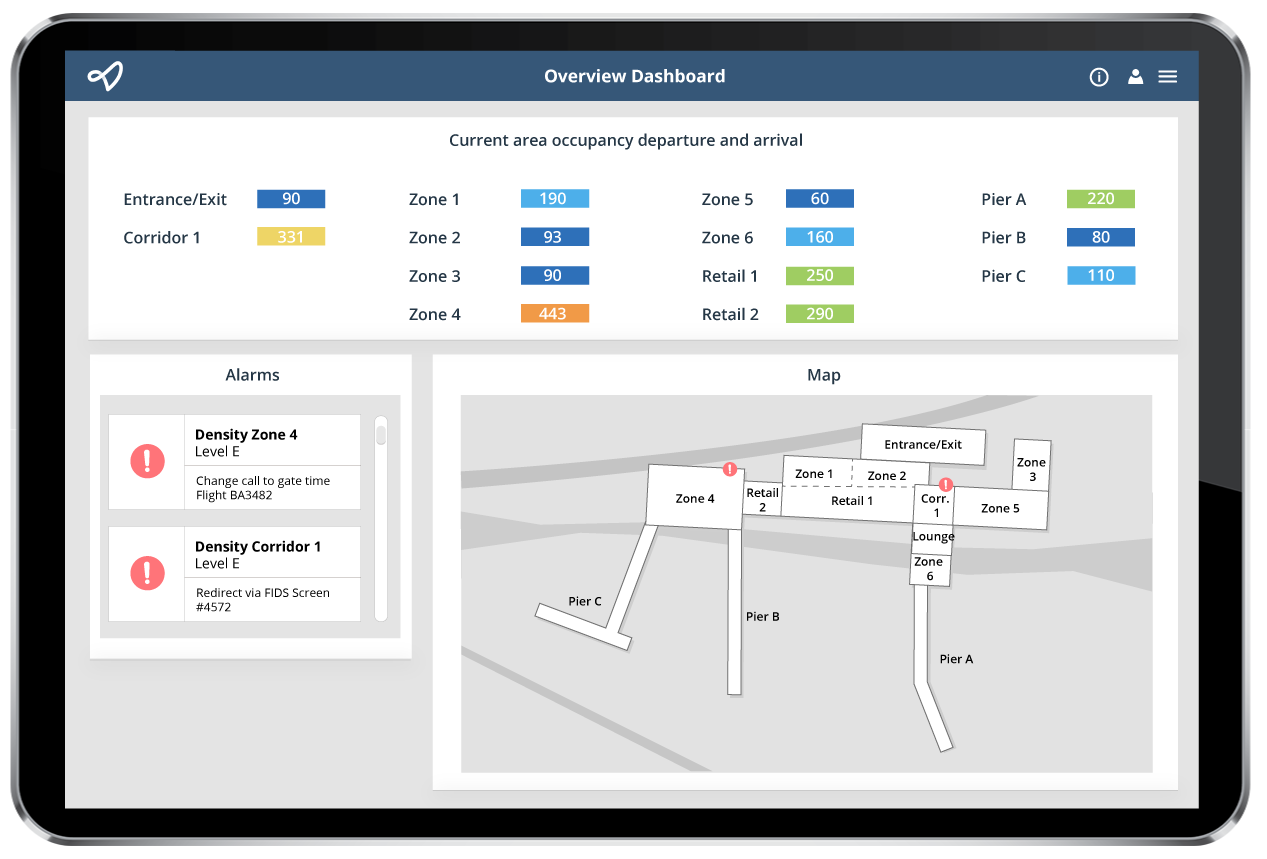
Iceland’s Airport Using Sensors, AI To Visualize, Streamline Passenger Flow
July 8, 2020 by Dave Haynes
Via SmartCitiesWorld
The international airport in Keflavík, Iceland is using an AI-driven passenger management solution to forecast and then visualize passenger and capacity loading and enable physical distancing.
It’s the sort of thing you could imagine would be useful and seen on displays in the “back of house” in all kinds of scenarios, from mass transport to mass merchandise, and places like sports and exhibit venues.
When you can see, on highly visible screens, the trending of things like gate line-ups, operations people can make decisions on deploying staff and increasing or reducing access.
The airport is using a solution from a UK-based company called Veovo, which is focused on the mass transport sector.
Reports SmartCitiesWorld:
Live Passenger Forecasting is designed to prevent airport crowding, improve capacity-planning and boost operational efficiency. Veovo hopes these capabilities will help to build passenger confidence in air travel and support social distancing initiatives.
As flights begin to resume globally, the ability for airports to cope with air travel fluctuations and new processes will be imperative to help minimise crowding and ensure smooth journeys, while operating under significant budgetary constraints.
Veovo’s Passenger Forecasting has been designed to reduce uncertainty around planning, enabling airports to handle unforeseen events.
The solution draws data from any available sources, including various sensor technologies, airline schedules and booking files, the Airport Operational Database (AODB), queue wait times and lane productivity, event calendar and boarding pass scans. Veovo states that this creates an accurate by-flight forecast of how passengers will arrive and transit through the terminal. The airport can then build a robust resourcing plan to match demand.
“During this Covid-19 period, new air traffic patterns and changing passenger behaviour means that we can no longer depend on plans based only on historical show-up patterns,” said Thordis Bjornsdottir, specialist in operation research at Isavia, Iceland’s airport authority.
“Veovo’s new live re-forecasting capabilities provide us with an early heads-up on changes to passenger presentation profiles. This allows us to easily adapt plans and rosters to reflect the current situation, improving journeys and keeping costs down.”
The solution continually re-forecasts, based on live data, and alerts the operator immediately when predetermined thresholds are reached. Resourcing and operational actions are recommended to minimise bottlenecks and prevent crowding, such as by adjusting call-to-gate time, changing border control lane openings or reallocating baggage belts.
It also allows the airport to understand the cause of the deviation from the plan, which could be anything from a late arrival, to a slower than predicted security process. This insight is then fed back into the future plan to continually improve the forecast accuracy, based on local conditions.
With a configurable, visual dashboard, airport partners, such as security, border control agencies and retailers, are also kept informed, as to when passengers will show up, and any impact on operational areas.
This company is by no means the only one out there doing using sensors, AI and data to visualize information in real-time. There are numerous shopper and ad audience analytics out there with solutions for many years, and start-ups like Wait Time doing interesting work in sports venues.
I’m a fan of things like this that are not just about selling more stuff or targeting ads, but instead build around improving operations, and by extension, the experiences of people who pass through and use facilities.
This could all just be viewed on a tablet, but there’s a really strong argument for back-of-house signage that enables all staff – not just a manager – see what’s going on. There’s also an argument for versions that push things wait times and guidance on alternatives to line-ups to passengers/customers.



Leave a comment